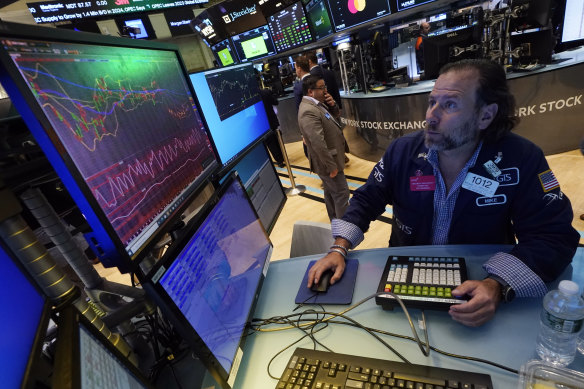
Data released earlier in the day offered some reassurance that progress toward the Fed’s 2 per cent inflation target has resumed. The so-called core consumer price index, which excludes food and energy, rose 0.2 per cent in May and 3.4 per cent from a year earlier, the slowest pace since 2021.
The news boosted Wall Street, but gains were pared after the Fed announcement. The S&P 500 closed 0.9 per cent higher, the Dow Jones dipped by 0.1 per cent and the Nasdaq gained 1.5 per cent.
Powell said the officials welcomed the latest inflation figures, adding that he hopes for more reports like that. He added it marked progress toward building confidence, but not to the degree that would warrant the central bank to lower interest rates at this time.
Other countries have already begun to lower borrowing costs. The European Central Bank cut interest rates last week, as did the Bank of Canada.
Yields pared their day’s decline as Powell spoke to reporters. Traders still are betting the Fed will most likely cut rates twice by year end, and see a high chance of the first cut in November.
Fed officials also published fresh forecasts for inflation, raising their projection for underlying inflation to 2.8 per cent from 2.6 per cent in March. They maintained their forecasts for economic growth and the unemployment rate at 2.1 per cent and 4 per cent respectively. The unemployment rate climbed to 4 per cent in May.
Powell described the overall labor market as strong but gradually cooling, comparing it to the state of the jobs market at the cusp of the pandemic.
Restrictiveness debate
Officials also raised their projections for where interest rates will settle in the longer term, to 2.8 per cent from 2.6 per cent at the March gathering. The increase, following a slight bump in March, hints policymakers expect higher interest rates are here to stay.
Some officials, including Dallas Fed President Lorie Logan, have said higher borrowing costs may not be slowing the economy as much as previously thought. Still others, such as New York Fed President John Williams, have said that policy is well positioned to bring inflation down to the Fed’s goal.

Wall Street is desperate for the Fed to start cutting rates. Credit: AP
US central bankers are engaging in a broader discussion about whether the neutral rate, or the rate at which the Fed is neither slowing nor stimulating the economy, has risen since before the pandemic. A higher neutral rate would suggest that monetary policy is not doing as much to restrain the economy.
While US economic growth is moderating and spending is cooling, some aspects of the economy are proving more resilient to higher borrowing costs.
US nonfarm payrolls surged by 272,000 in May, surpassing all projections in a Bloomberg survey of economists, and average hourly earnings growth picked up.
Loading
The unemployment rate — which is derived from a separate survey — increased to 4 per cent from 3.9 per cent, rising to that level for the first time in over two years.
The Fed also said it would continue to shrink its balance sheet at the slower pace announced in May. Starting this month, the central bank will let its holdings of Treasury securities fall by up to $US25 billion ($37.6 billion) a month, down from the previous cap of $US60 billion. The cap for mortgage-backed securities was left unchanged at $US35 billion.
Bloomberg
The Business Briefing newsletter delivers major stories, exclusive coverage and expert opinion. Sign up to get it every weekday morning.



























